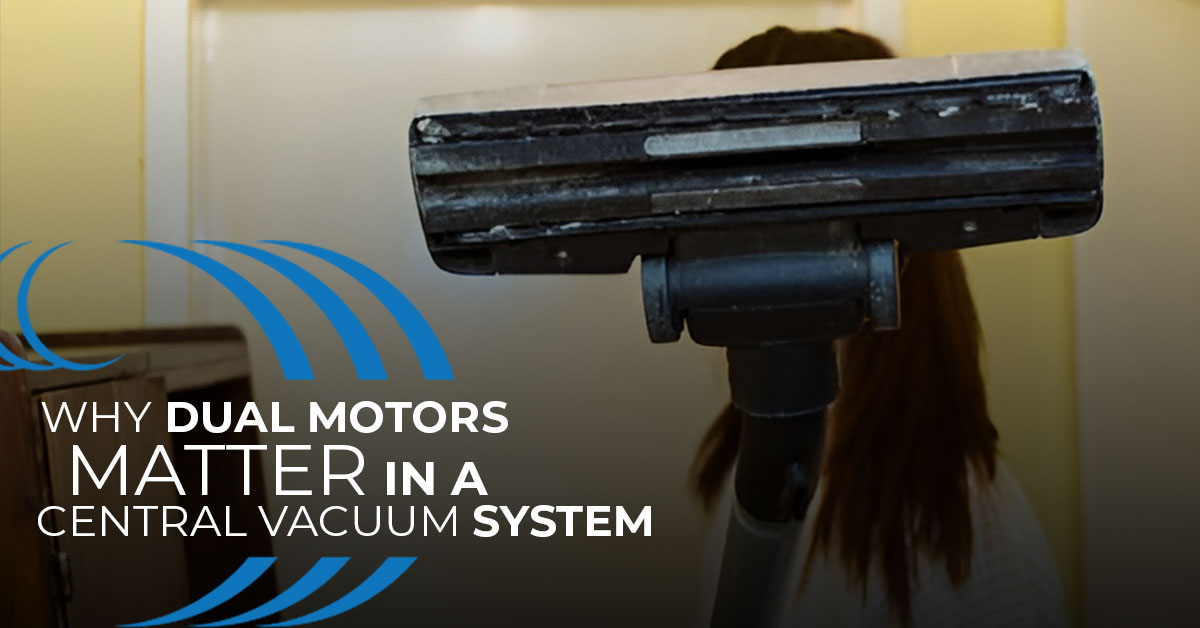
Boosting Productivity in Office Buildings with Central Vacuum
In today’s fast-paced work environment, maintaining a clean and organized office space is crucial for productivity. Office buildings often struggle with keeping their premises clean

In the realm of central vacuum systems, dual motors have emerged as a game-changer. They offer superior performance and efficiency, making them an ideal choice for larger homes or businesses with more demanding cleaning requirements. This article delves into the importance of dual motors in a central vacuum system, focusing on aspects like tangential bypass motors, peripheral bypass motors, the central vacuum cooling system, motor size in central vacuums, and dual motor suction power.
A dual motor central vacuum system uses two motors instead of one, which significantly enhances its performance. Depending on the system’s design, it might feature two tangential bypass motors, two peripheral bypass motors, or a combination of both.
Tangential bypass motors are designed to separate the vacuumed air from the motor’s cooling air, preventing dust and debris from passing through the motor. This separation results in a cooler running motor, prolonging its lifespan and ensuring consistent performance.
Like tangential bypass motors, peripheral bypass motors also separate the vacuumed air from the cooling air. However, the separation occurs at the sides (or periphery) of the motor, hence the name. These motors also offer the benefit of extended motor life due to their dedicated cooling system.
The use of either tangential or peripheral bypass motors in a dual motor system can significantly enhance the system’s durability and performance.
The cooling system in a central vacuum plays a crucial role in maintaining the motor’s performance and longevity. In dual motor systems, each motor has its own separate cooling system, allowing them to operate at optimal temperatures even during extended periods of use.
Dual motor systems are often equipped with sophisticated cooling technologies that efficiently dissipate heat, thereby ensuring consistent performance and reducing the risk of overheating.
In central vacuum systems, motor size matters. Larger motors are designed to handle the heavier workload of larger homes or businesses where the system is used for extended periods. Dual motor systems essentially double this capacity, enabling them to serve larger areas more efficiently.
However, it’s important to note that a larger motor doesn’t always equate to higher suction power. The quality of the motor, its design, and how well it’s integrated into the system also play crucial roles.
One of the key benefits of dual motor central vacuum systems is their enhanced suction power. With two motors working in tandem, these systems can generate a higher vacuum level, resulting in more effective cleaning.
Moreover, dual motor systems maintain consistent suction power across multiple inlets, allowing for simultaneous multi-user operation. This is particularly beneficial in commercial settings where multiple cleaning tasks often need to be performed simultaneously.
In conclusion, dual motors significantly enhance the performance and efficiency of central vacuum systems. Whether it’s the use of tangential or peripheral bypass motors, an efficient cooling system, or the increased suction power, dual motor systems offer numerous advantages that make them a worthy investment for any home or business seeking a powerful and reliable cleaning solution.

In today’s fast-paced work environment, maintaining a clean and organized office space is crucial for productivity. Office buildings often struggle with keeping their premises clean

Central vacuums in animal shelters & vet clinic: Explore how these systems boost hygiene, efficiency, and air quality.

In the world of home entertainment, a home theater is a luxury that many homeowners dream of. It’s an immersive experience that brings the magic

A central vacuum system is a significant investment that promises convenience, powerful suction, and improved indoor air quality. However, choosing the right central vacuum hose
Our home automation products are at the forefront of technology, offering a blend of convenience, security, and efficiency. As a Homewave dealer, you’ll be part of a network transforming homes into smart, futuristic spaces.
Embark on this rewarding journey with us and leverage the power of innovative technology.
Please fill out this form and become a Homewave Dealer.